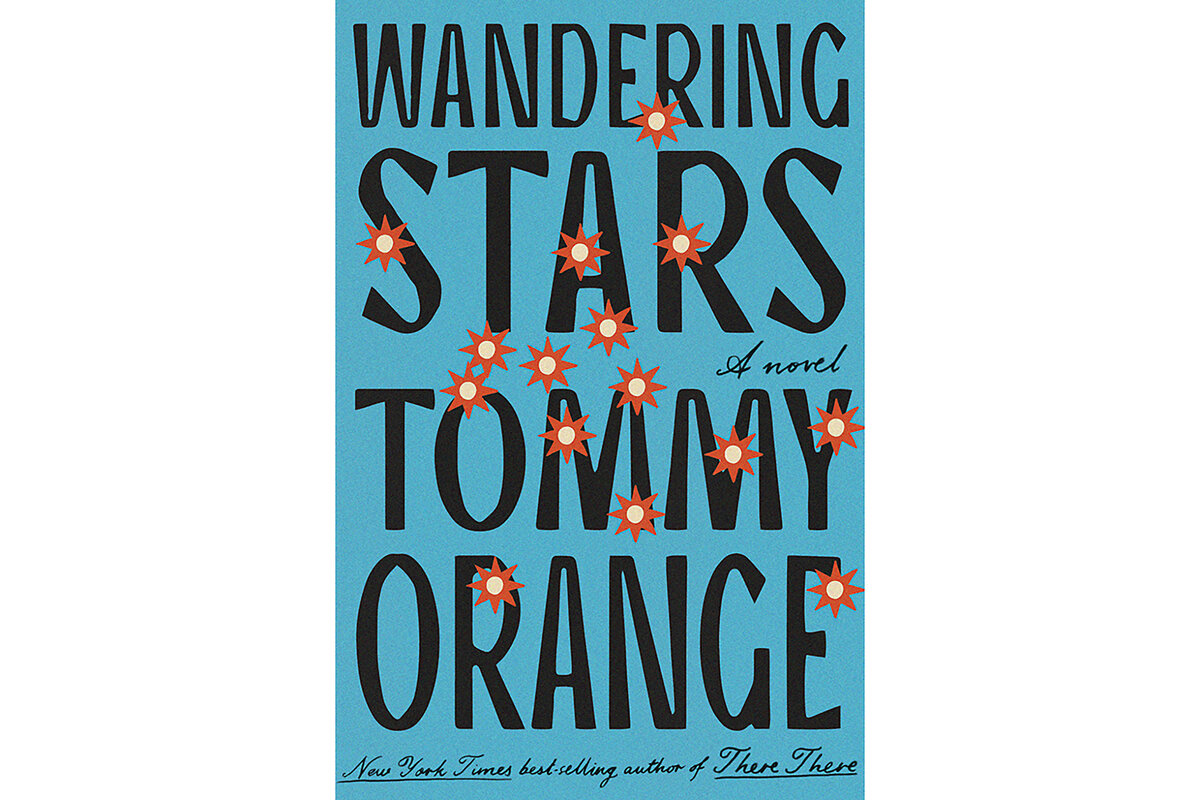ŌĆśWandering StarsŌĆÖ explodes the nationŌĆÖs myths about Native Americans
Loading...
Tommy OrangeŌĆÖs novels reveal stories that ŌĆ£bring you back better made,ŌĆØ to paraphrase a line from one of the characters in his latest book, ŌĆ£Wandering Stars.ŌĆØ For some readers, the journey may be harrowing, as Orange is unstinting in his depictions of the injustices and violent acts perpetrated against Native Americans. But the novelist also reveals the capacity of tribal identity to sustain and empower families, even amid ongoing struggles.┬Ā
ŌĆ£Wandering Stars,ŌĆØ a prequel and a continuation of OrangeŌĆÖs award-winning 2018 debut novel ŌĆ£There There,ŌĆØ tells of the displacement and dislocation of seven generations of a fictional Cheyenne family. Their lives play out against a backdrop of actual historical events.
As an enrolled member of the Cheyenne and Arapaho Tribes of Oklahoma, Orange brings authority and authenticity to his writing. Those familiar with his earlier book will recognize some of the characters here, as he explores the consequences of a shooting that occurred at a powwow in ŌĆ£There There.ŌĆØ But readers need not have read the first novel to become absolutely engaged with this one.
Part One of ŌĆ£Wandering StarsŌĆØ begins with Jude Star, a survivor of the 1864 Sand Creek Massacre in Colorado, in which U.S. troops murdered 230 Cheyenne and Arapaho people, mostly women, children, and elders. Star, now an inmate at the Fort Marion prison, is forced to learn English and practice ║ŻĮŪ┤¾╔±ity. The prison is run by former U.S. military officer Richard Henry Pratt, who goes on to found the notorious Carlisle Indian Industrial School. The school, and others like it, sought to strip students of their Native identities, embracing, as Pratt did, the motto ŌĆ£Kill the Indian, save the man.ŌĆØ Years later, StarŌĆÖs son Charles becomes a student at the school. As he struggles with the brutality and the attempts by others to deny his individuality, Charles befriends a fellow student, Opal Viola Bear Shield. In the chapters that follow, the two have a child of their own.┬Ā
These are the ancestors of the characters in ŌĆ£There There,ŌĆØ who had gathered at the powwow. Orange uses the powwow shooting as a powerful pivot in ŌĆ£Wandering Stars,ŌĆØ as subsequent chapters convey how the experience affected this family. Part Two, set in 2018, brings the familyŌĆÖs story into the present and unfolds the experiences of later generations of the Cheyenne tribe, some of whom are dealing with collective trauma, substance abuse, and the dissipation of the tribe.┬Ā
As Orange makes clear, the familyŌĆÖs, and tribeŌĆÖs, source of strength is still their heritage. Contemporary generations come to understand that theirs is a culture that has endured despite all attempts to eradicate it. One of StarŌĆÖs descendants puts it succinctly: ŌĆ£It was more than survival. The culture sings. The culture dances. The culture keeps telling stories that bring you into them, take you away from your life and bring you back better made.ŌĆØ┬Ā ┬Ā
By telling this story from multiple perspectives and across generations, Orange provides an expansive understanding of these historical events and the consequences to peopleŌĆÖs lives.┬Ā
Tracing the experiences of StarŌĆÖs family, Orange emphasizes a part of American history that has long been either sanitized or erased. As Lony Red Feather, one of the contemporary characters, observes, ŌĆ£Everyone only thinks weŌĆÖre from the past, but then weŌĆÖre here, but they donŌĆÖt know weŌĆÖre still here.ŌĆØ ┬Ā
Orange has not allowed this effort at erasure, whether deliberate or passive, to succeed. His tool is his exquisite writing talent. Yes, it is a brutal story, and Orange is a remarkable storyteller. By writing of flawed characters and revealing human traits with which most anyone can identify, Orange chronicles difficult events in ways that others may hear and take to heart.





